.
On April 25th, African Parks’ ranger Agoyo Mbikoyo struggled the short way back to his patrol unit’s campsite, collapsed, and died. He was one of the unlucky ones—he had stumbled across a group of armed poachers a short distance away from his unit’s camp in Garamba National Park, Democratic Republic of the Congo (DRC).
For decades, animal poaching in Africa—particularly poaching of elephants and rhinos—has been closely aligned with the operations of multiple African armies, militias, and insurgent groups. In the late 1970s and 1980s, animals in rural areas were generally killed to feed or finance African military or paramilitary groups that were forced to spend months in the bush as a result of the conflicts of the time, including: the Ugandan-Tanzanian war in the late 1970s; the Ogaden War (or Ethiopian-Somali War), also in the late 1970s; the First Sudanese Civil War (1955-1972) and Second Sudanese Civil War (1983-2005); and a number of civil, independence, and border wars between and within Namibia, Angola, and South Africa from the 1960s to the early 1990s.
“Ivory’s Curse”, a report by C4ADS, a Washington D.C.-based nonprofit, enumerates the devastating effects these and other conflicts had on elephant populations in Africa:
“In Sudan alone, 12,000 elephants were being killed per year in the early 1980s…In neighboring Central African Republic…the estimated 100,000 elephants in 1976 crashed to as low as 15,000 by the mid-1980s, while 64% of the elephants in Garamba National Park in the northern DRC were killed by the end of the 1980s. In eastern Kenya, spillover and poaching from Somalia reduced elephant numbers from 20,000 in 1976 to 6,000 by the 1990s…Later in the 1990s…horseback Sudanese poachers armed with Kalashnikov rifles fanned out across Central Africa...”
While the methods and means of poaching have remained more or less the same since the first truly militarized wave of poaching thirty years ago, the trade in and demand for ivory has changed. After the dramatic crash in elephant population numbers during the 1970s and particularly the 1980s (in 1979, there were an estimated 1.3 million African elephants—in 1989, only 600,000 elephants remained), the international elephant ivory trade was banned in January 1990 during a meeting of the Convention on International Trade in Endangered Species of Wild Fauna and Flora (CITES). Ivory prices plummeted in response to the ban, and elephant poaching subsequently slowed sufficiently to allow African elephants to begin to recover.
The ban, however, was short-lived. CITES-approved stockpile sales in 1997 and 2000, rather than decreasing the price of ivory by flooding the market, seemed to signal to dormant ivory syndicates and Asian traders that the ivory trade was once again permissible—in 2002, an investigation into a six-ton ivory seizure in Singapore revealed 19 previous illicit ivory shipments to Asian countries.
Six years later, on July 15, 2008, China was awarded approved one-time buyer status by CITES. Since China’s approval, ivory prices have skyrocketed; now, a single elephant that yields 10kg of ivory can generate as much as $30,000 in revenue. The huge increase in Asian demand for ivory has coincided with a large increase in demand for rhino horn as well. In 2013, one kilogram of rhino horn was worth about US$65,000 in Vietnam, although some horns can bring as much as $100,000 per kilogram. Price increases have had a devastating impact on rhino populations: in 2007, only 13 rhinos were poached in South Africa. In 2014, 1,215 rhinos were poached in South Africa, 827 in Kruger National Park alone.
Ivory’s rising value has been reflected in increasing international seizures of illegal ivory shipments. Prior to 2009, authorities around the world averaged five large-scale seizures per year. In the two years after China’s 2008 approval, though, there were thirteen and eleven large-scale seizures respectively. Since then, the ivory market has snowballed—in 2011, there were 21 large-scale seizures. Between mid-April and mid-May this year, at least 12.8 tons of ivory were seized from three shipments alone. It is important to note that ivory seizures worldwide are estimated to represent only 10% of the global ivory trade.
This meteoric increase in price and demand can be attributed to a variety of factors, including rising Asian affluence and ivory’s and rhino horns’ historical roles as cultural and status symbols for the Asian upper-classes. Some Asian elites, betting on the imminent extinction of African elephants, are buying ivory just to sell it as prices are driven higher.
In Vietnam, and to a lesser extent in China, desire for rhino horn has been driven by a belief in traditional medicine, which supports the idea of rhino horn as a curative and restorative medication. Rhino horn is, in fact, mostly keratin—the same substance that makes up human hair and fingernails.
High demand for ivory post-2008 has exacerbated conflict between paramilitary groups and rangers. According to IUCN, about 140 rangers have been killed in the DRC’s Virunga National Park alone in the past 15 years. At a wildlife conference in early 2014, President Ali Bongo Ondimba of Gabon said, “Poachers do not hesitate to fire upon our park rangers. In some countries they are involved in a bush war as intense as any modern conflict.”
Park rangers, even well trained and well-equipped African Parks’ rangers, are unable to compete with the capabilities and resources available to certain poaching groups. Between April and May 2014, 68 poached elephants were found in Garamba, despite intensified anti-poaching efforts. An investigation by African Parks revealed that four different groups were the culprits: LRA insurgents, armed groups from South Sudan, members of the Congolese Armed Forces (FARDC), and a group of poachers operating from a helicopter. The rangers noted that the LRA forces were carrying brand new weapons and large quantities of ammunition. The poachers from South Sudan, some wearing uniforms, threw hand-grenades at the rangers. The helicopter attacks were consistent with a series of 2012 attacks that were traced back to a Ugandan military helicopter. The Garamba park rangers at the time operated with old weapons, limited ammunition, no hand-grenades, and no helicopter.
Increases in poaching after 2008, and particularly after 2011, have amplified violence towards civilians as well. On June 24, 2012, Mai Mai rebels from two different groups attacked the Okapi Reserve Epulu headquarters in the DRC at dawn. The rebels burned rangers alive, looted, raped, and press-ganged 56 civilians into carrying their loot back to their base. The rebels were still holding at least eleven young girls in slavery as of 2014. The Mai Mai also slaughtered all fourteen of the headquarters’ highly endangered and carefully bred and maintained okapi.
So far this year, there have been at least six large-scale ivory seizures totaling 13.3 tons, which is equivalent to about 1,330 elephants killed. In addition to the ivory trade, thousands of kilograms of rhino horn, pangolin scales, and other animal parts move across national borders every year. It is widely estimated that at the current rate of poaching, the African elephant will be extinct within the next ten to twenty years. Under-funded and under-equipped rangers simply cannot compete with the capabilities of poaching networks, and therefore cannot be seen as a viable solution. This poaching crisis will end in one of two ways: extinction of demand, or extinction of species.
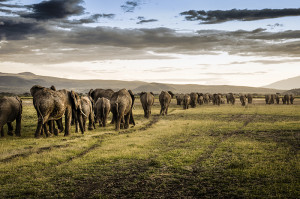
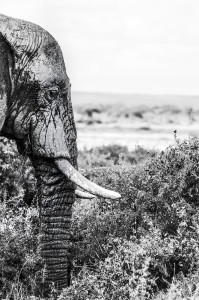
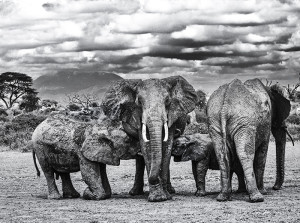
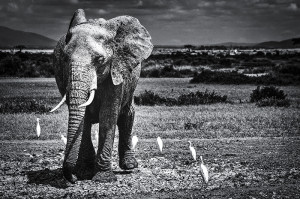

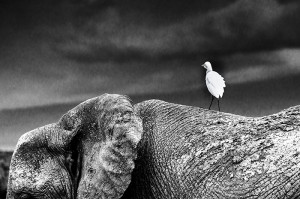
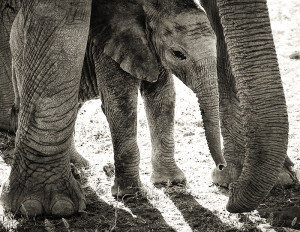







The views presented in this article are the author’s own and do not necessarily represent the views of any other organization.


a global affairs media network
Park Rangers on Frontlines of Poaching Wars

||||||
June 12, 2015
On April 25th, African Parks’ ranger Agoyo Mbikoyo struggled the short way back to his patrol unit’s campsite, collapsed, and died. He was one of the unlucky ones—he had stumbled across a group of armed poachers a short distance away from his unit’s camp in Garamba National Park, Democratic Republic of the Congo (DRC).
For decades, animal poaching in Africa—particularly poaching of elephants and rhinos—has been closely aligned with the operations of multiple African armies, militias, and insurgent groups. In the late 1970s and 1980s, animals in rural areas were generally killed to feed or finance African military or paramilitary groups that were forced to spend months in the bush as a result of the conflicts of the time, including: the Ugandan-Tanzanian war in the late 1970s; the Ogaden War (or Ethiopian-Somali War), also in the late 1970s; the First Sudanese Civil War (1955-1972) and Second Sudanese Civil War (1983-2005); and a number of civil, independence, and border wars between and within Namibia, Angola, and South Africa from the 1960s to the early 1990s.
“Ivory’s Curse”, a report by C4ADS, a Washington D.C.-based nonprofit, enumerates the devastating effects these and other conflicts had on elephant populations in Africa:
“In Sudan alone, 12,000 elephants were being killed per year in the early 1980s…In neighboring Central African Republic…the estimated 100,000 elephants in 1976 crashed to as low as 15,000 by the mid-1980s, while 64% of the elephants in Garamba National Park in the northern DRC were killed by the end of the 1980s. In eastern Kenya, spillover and poaching from Somalia reduced elephant numbers from 20,000 in 1976 to 6,000 by the 1990s…Later in the 1990s…horseback Sudanese poachers armed with Kalashnikov rifles fanned out across Central Africa...”
While the methods and means of poaching have remained more or less the same since the first truly militarized wave of poaching thirty years ago, the trade in and demand for ivory has changed. After the dramatic crash in elephant population numbers during the 1970s and particularly the 1980s (in 1979, there were an estimated 1.3 million African elephants—in 1989, only 600,000 elephants remained), the international elephant ivory trade was banned in January 1990 during a meeting of the Convention on International Trade in Endangered Species of Wild Fauna and Flora (CITES). Ivory prices plummeted in response to the ban, and elephant poaching subsequently slowed sufficiently to allow African elephants to begin to recover.
The ban, however, was short-lived. CITES-approved stockpile sales in 1997 and 2000, rather than decreasing the price of ivory by flooding the market, seemed to signal to dormant ivory syndicates and Asian traders that the ivory trade was once again permissible—in 2002, an investigation into a six-ton ivory seizure in Singapore revealed 19 previous illicit ivory shipments to Asian countries.
Six years later, on July 15, 2008, China was awarded approved one-time buyer status by CITES. Since China’s approval, ivory prices have skyrocketed; now, a single elephant that yields 10kg of ivory can generate as much as $30,000 in revenue. The huge increase in Asian demand for ivory has coincided with a large increase in demand for rhino horn as well. In 2013, one kilogram of rhino horn was worth about US$65,000 in Vietnam, although some horns can bring as much as $100,000 per kilogram. Price increases have had a devastating impact on rhino populations: in 2007, only 13 rhinos were poached in South Africa. In 2014, 1,215 rhinos were poached in South Africa, 827 in Kruger National Park alone.
Ivory’s rising value has been reflected in increasing international seizures of illegal ivory shipments. Prior to 2009, authorities around the world averaged five large-scale seizures per year. In the two years after China’s 2008 approval, though, there were thirteen and eleven large-scale seizures respectively. Since then, the ivory market has snowballed—in 2011, there were 21 large-scale seizures. Between mid-April and mid-May this year, at least 12.8 tons of ivory were seized from three shipments alone. It is important to note that ivory seizures worldwide are estimated to represent only 10% of the global ivory trade.
This meteoric increase in price and demand can be attributed to a variety of factors, including rising Asian affluence and ivory’s and rhino horns’ historical roles as cultural and status symbols for the Asian upper-classes. Some Asian elites, betting on the imminent extinction of African elephants, are buying ivory just to sell it as prices are driven higher.
In Vietnam, and to a lesser extent in China, desire for rhino horn has been driven by a belief in traditional medicine, which supports the idea of rhino horn as a curative and restorative medication. Rhino horn is, in fact, mostly keratin—the same substance that makes up human hair and fingernails.
High demand for ivory post-2008 has exacerbated conflict between paramilitary groups and rangers. According to IUCN, about 140 rangers have been killed in the DRC’s Virunga National Park alone in the past 15 years. At a wildlife conference in early 2014, President Ali Bongo Ondimba of Gabon said, “Poachers do not hesitate to fire upon our park rangers. In some countries they are involved in a bush war as intense as any modern conflict.”
Park rangers, even well trained and well-equipped African Parks’ rangers, are unable to compete with the capabilities and resources available to certain poaching groups. Between April and May 2014, 68 poached elephants were found in Garamba, despite intensified anti-poaching efforts. An investigation by African Parks revealed that four different groups were the culprits: LRA insurgents, armed groups from South Sudan, members of the Congolese Armed Forces (FARDC), and a group of poachers operating from a helicopter. The rangers noted that the LRA forces were carrying brand new weapons and large quantities of ammunition. The poachers from South Sudan, some wearing uniforms, threw hand-grenades at the rangers. The helicopter attacks were consistent with a series of 2012 attacks that were traced back to a Ugandan military helicopter. The Garamba park rangers at the time operated with old weapons, limited ammunition, no hand-grenades, and no helicopter.
Increases in poaching after 2008, and particularly after 2011, have amplified violence towards civilians as well. On June 24, 2012, Mai Mai rebels from two different groups attacked the Okapi Reserve Epulu headquarters in the DRC at dawn. The rebels burned rangers alive, looted, raped, and press-ganged 56 civilians into carrying their loot back to their base. The rebels were still holding at least eleven young girls in slavery as of 2014. The Mai Mai also slaughtered all fourteen of the headquarters’ highly endangered and carefully bred and maintained okapi.
So far this year, there have been at least six large-scale ivory seizures totaling 13.3 tons, which is equivalent to about 1,330 elephants killed. In addition to the ivory trade, thousands of kilograms of rhino horn, pangolin scales, and other animal parts move across national borders every year. It is widely estimated that at the current rate of poaching, the African elephant will be extinct within the next ten to twenty years. Under-funded and under-equipped rangers simply cannot compete with the capabilities of poaching networks, and therefore cannot be seen as a viable solution. This poaching crisis will end in one of two ways: extinction of demand, or extinction of species.














The views presented in this article are the author’s own and do not necessarily represent the views of any other organization.


